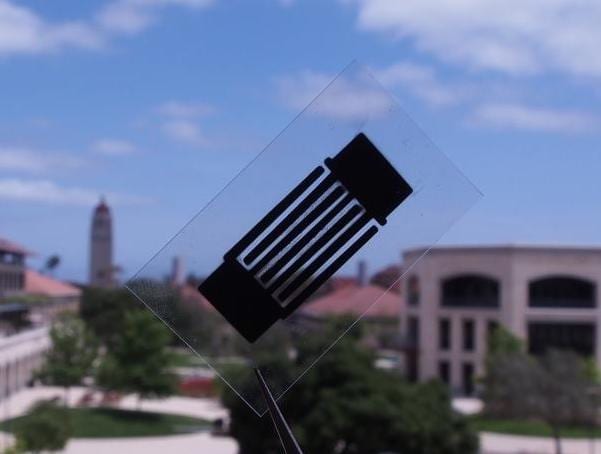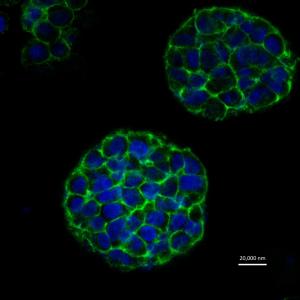
Lithium-ion technology is still the gold standard for energy storage as demonstrated by the popularity of the new Powerwall battery, Tesla Energy’s much-publicized foray into Li-ion energy storage for homes and businesses. However, some new technologies are sneaking up behind. In the latest development, lithium-sulfur batteries could benefit from a new “designer carbon” engineered by a team of researchers at Stanford University.
Why Natural Is Not Better, Energy Storage Edition
The new designer carbon material could have a variety of applications, but the Stanford University team has zeroed in on the energy storage potential, particularly in respect to lithium-sulfur (Li-S) batteries.
The new material is actually a synthetic form of bio-based activated carbon. For those of you new to the topic, activated carbon is a common material that shows up in water filters and deodorizers, among many other things — but not energy storage devices, at least not yet.
Inexpensive forms of activated carbon are typically made from coconut shells, which involves a lot of high-temperature processing and chemical finishing. The result is a material rich in nanoscale pores, which gives it a high surface area ideal for storing electrical charges.
However, this “natural” form of activated carbon falls flat in terms of transporting a charge, partly because there is little connectivity between the pores. Here’s lead researcher Zhenan Bao describing the problem:
With activated carbon, there’s no way to control pore connectivity. Also, lots of impurities from the coconut shells and other raw starting materials get carried into the carbon. As a refrigerator deodorant, conventional activated carbon is fine, but it doesn’t provide high enough performance for electronic devices and energy-storage applications.
The Designer Carbon Solution
As a workaround, the Stanford team created its own synthetic sheets of carbon from a hydrogel polymer (hydrogel is fancyspeak for a class of super-absorbing “smart” materials). To activate the material, they added potassium hydroxide, which also increased its surface area.
The result is a carbon material with characteristics that can be controlled in two ways: by using different polymers and organic linkers, and by changing the temperature of the fabrication process.
Here are a couple of snippets from the new study:
For example, raising the processing temperature from 750 degrees Fahrenheit (400 degrees Celsius) to 1,650 F (900 C) resulted in a 10-fold increase in pore volume.
Subsequent processing produced carbon material with a record-high surface area of 4,073 square meters per gram – the equivalent of three American football fields packed into an ounce of carbon. The maximum surface area achieved with conventional activated carbon is about 3,000 square meters per gram.
The End Of The Lithium-Ion Era
Li-S energy storage has important advantages over Li-ion in terms of cost, energy density, and toxicity, but until recently, some major drawbacks have stymied the development of Li-S batteries.
Read more: New “Designer” Energy Storage Breakthrough Packs 3 Football Fields Into 1 Ounce of Carbon
The Latest on: Lithium-sulfur battery
[google_news title=”” keyword=”Lithium-sulfur battery” num_posts=”10″ blurb_length=”0″ show_thumb=”left”]
via Google News
The Latest on: Lithium-sulfur battery
- Scientists make breakthrough with high-power lithium-sulfur batteries: 'Our research shows a significant advancement'on April 30, 2024 at 5:00 am
"Our research shows a significant advancement, enabling lithium-sulfur batteries to achieve full charge/discharge in less than five minutes," Professor Shizhang Qiao, the research lead, said in a ...
- Batteries Newson April 28, 2024 at 5:00 pm
Researchers are developing new ... Healable Cathode Could Unlock Potential of Solid-State Lithium-Sulfur Batteries Mar. 6, 2024 — Engineers developed a cathode material for lithium-sulfur (Li-S ...
- Storing and utilizing energy with innovative sulfur-based cathodeson April 24, 2024 at 7:31 am
Electric vehicles and portable electronic devices such as laptops and mobile phones are unthinkable without lithium-ion batteries. The problem is highly toxic materials such as cobalt are often used ...
- How Clemson University research could affect your access to lithium ion batterieson April 24, 2024 at 4:06 am
While the availability of lithium iode batteries is expected to wane, researchers are looking to extend that supply by ...
- Researchers Develop Revolutionary Cathode Material for Lithium-Sulfur Batterieson April 19, 2024 at 1:00 pm
Researchers at the University of California - San Diego have developed a self-healing cathode material that overcomes the challenges of traditional sulfur cathodes and could revolutionize solid-state ...
- Lithium-Sulfur Battery Market Key Segments, Share, Trends, Size, Growth, and Forecast 2024 to 2032on April 16, 2024 at 6:09 pm
The Lithium-Sulfur (Li-S) battery market is experiencing significant growth and innovation driven by the increasing demand for energy storage solutions across various industries. Li-S batteries are ...
- Sulfur-Based Battery Market Projected to Reach $7.09 billion by 2030 - Exclusive Report by 360iResearchon April 8, 2024 at 5:00 pm
PUNE, India, April 8, 2024 /PRNewswire/ -- The report titled "Sulfur-Based Battery Market by Product Type (Lithium-Sulfur Battery, Sodium-Sulfur Battery), Energy Density (High Energy Density ...
- Chemists decipher reaction process that could improve lithium-sulfur batterieson February 6, 2024 at 10:03 am
L ithium-sulfur batteries can potentially store five to 10 times more energy than current state-of-the-art lithium-ion batteries at much lower cost. Current lithium-ion batteries use cobalt oxide ...
via Bing News










